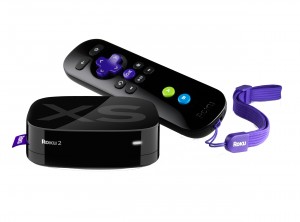OTT in CEE to grow rapidly from low base
 Internet-enabled TVs should in CEE should exceed 20 million by 2018, and will be the most high-growth category of devices in the region, according to research group Ovum.
Internet-enabled TVs should in CEE should exceed 20 million by 2018, and will be the most high-growth category of devices in the region, according to research group Ovum.
Media streamers will see high growth from 2016-17 from a low base to around six million by 2018, while other device types will also grow from a low base, Ovum’s TV practice leader Ed Barton told the Digital TV CEE conference in Budapest this morning.
OTT revenue per broadband household in CEE current amounts to only about US$1.90, compared with US$78.10 in North America and US$14.30 in western Europe, said Barton. Total OTT revenue will grow to around US$700 million in CEE by 2017, still led by ad revenue but with more intrerest in subscription services. “We see CEE as one of the fastest growth regions for OTT,” said Barton. “CEE OTT revenues are about 1% of the global total, compared with 2% for pay TV revenues. The advertising model will give rise to some very interesting possibilities going forward,” he said.
Advertising currently accounts for 78% of OTT revenues in the region and will decline proportionally to 59% by 2017, according to Ovum, with subscripton services growing from 17% to 33%. Transactional revenues are likely to grow only from 5% to 8%, according to the company.
Subscription services, which have played well in North America and the UK, are likely to do less well in CEE, said Barton, where people have demonstrated less appetite to pay a monthly fee for premium services.
Mobile OTT video could become interesting if bundled with other services, said Barton.
Ovum expects Netflix’s subscriber base to grow to 23.3 million by 2018 in the absence of further launches, up from 14.8 million this year, with further deals with cable and other service providers likely. Netflix will face tougher competition in europe than it has in the US however.
Household broadband penetration is growing, but uncapped broadband is important for OTT and espeically HD and UHD services, he said. Russia is leadng in service availability, but there are also intreresting developments in Poland, he said. It is important for legal pay alternatives to pirated services to develop, with illegal sports streaming growing alarmingly over the past year.
Payment processing is an extremely important part of the mix, said Barton. Getting money in regions where credit and debit card penetration is low or there is distrust in non-cash spending presents a key problem.



